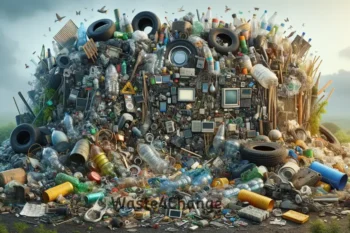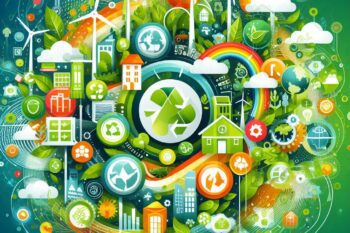7 Types of Plastic: The Different Materials and Grades
Do you know the seven types of plastic? Plastic has different types with different materials and grades. Some of the well-known examples including LDPE, PE, Polyester, HDPE, PVC, LDE, PP, PS, PC, and more.
Plastic isn’t as simple as you may think. Each plastic-type is different from the others. Some are reusable, the others produce hazardous materials after several uses.
Some are easily recyclable, others need more sophisticated and intricate handlings in their recycling process.
Take your nearest plastic product, the lunch box you brought from home, or your water bottle, your instant noodle cup. Study closely, you might find a number at its back or bottom.
You probably already know what it is. The number indicates the type of plastic used to make the product you are holding right now.
But do you know exactly what number you should avoid and what number has the biggest chance of damaging the environment?
Here are the 7 types of plastic that you need to know
1. PET or PETE or Polyester (Polyethylene Terephthalate)
Polyethylene (PE) Terephthalate or PET is also known as a wrinkle-free fiber. It’s different from the plastic bag we commonly see at the supermarket.
This type of plastic polymer is mostly used for food & drink packaging purposes, due to its strong ability to prevent oxygen from getting in & spoiling the product inside. It also helps to keep the carbon dioxide in carbonated drinks from getting out.
Although PET is most likely to be picked up by recycling programs, this type of plastic contains antimony trioxide—a matter that is considered as a carcinogen—capable of causing cancer in a living tissue.
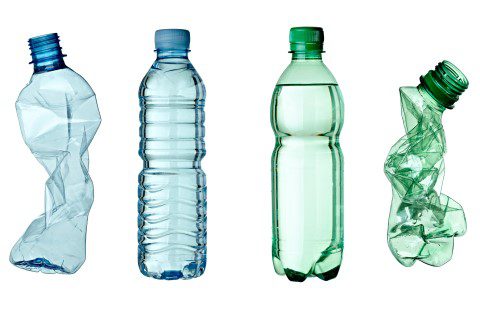
The longer a liquid is left in a PET container the greater the potential for the release of the antimony. Warm temperatures inside cars, garages, and enclosed storage could also increase the release of hazardous matter.
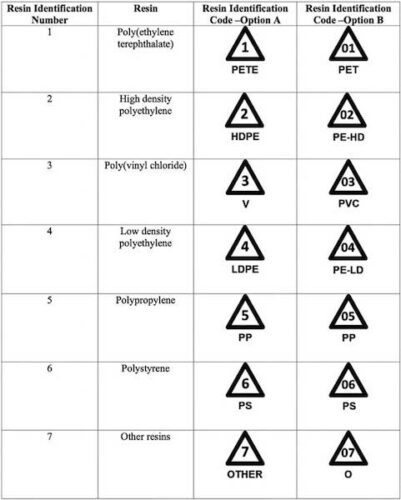


2. HDPE (High-Density Polyethylene) Plastic Type



Quite unique compared to the other types, HDPE has long virtually unbranched polymer chains which makes them really dense & thus, stronger & thicker from PET.
HDPE is a plastic-type commonly used in a grocery bag, opaque milk, juice container, shampoo bottle, and medicine bottle.
Not only recyclable, but HDPE is also relatively more stable than PET. It is considered a safer option for food and drink use, although some studies have shown that it can leach estrogen-mimicking additive chemicals that could disrupt the human’s hormonal system when exposed to ultraviolet light.
3. PVC (Polyvinyl Chloride) Plastic Type



Polyvinyl Chloride is typically used in toys, blister wrap, cling wrap, detergent bottles, loose-leaf binders, blood bags, and medical tubing.
This plastic type used to be the second most widely used plastic resin in the world (after polyethylene), before the manufacture and disposal process of PVC has been declared as the cause of serious health risks and environmental pollution issues.
In the term of toxicity, PVC is considered the most hazardous plastic. The use of it may leach a variety of toxic chemicals such as bisphenol A (BPA), phthalates, lead, dioxins, mercury, and cadmium.
Several of the chemicals mentioned may cause cancer; it could also cause allergic symptoms in children and disrupt the human’s hormonal system.
PVS is also rarely accepted by recycling programs. This is why PVC is better best to be avoided at all costs.
4. LDPE Plastic Type (Low-Density Polyethylene)



As said before, Polyethylenes are the most used family of plastics in the world. This type of plastic has the simplest plastic polymer chemical structure, making it very easy and very cheap to process.
LDPE polymers have significant chain branching including long side chains making them less dense and less crystalline (structurally ordered) and thus a generally thinner more flexible form of polyethylene.
LDPE is mostly used for bags (grocery, dry cleaning, bread, frozen food bags, newspapers, garbage), plastic wraps; coatings for paper milk cartons and hot & cold beverage cups; some squeezable bottles (honey, mustard), food storage containers, container lids. They are also used for wire and cable covering.
Although some studies have shown that LDPE could also cause unhealthy hormonal effects in humans, LDPE is considered a safer plastic option for food and drink use. Unfortunately, this type of plastic is quite difficult to be recycled.
5. Polypropylene Plastic Type (PP)
Stiffer and more resistant to heat, PP is widely used for hot food containers. Its strength quality is somewhere between LDPE and HDPE. Besides in thermal vests, and car parts, PP is also included in the disposable diaper and sanitary pad liners.



Same as LDPE, PP is considered a safer plastic option for food and drink use. It’s a good material for baby milk bottle, as long as made of food-grade plastic and identified as “BPA-free.”
Although it bears all those amazing qualities, PP isn’t entirely recyclable and could also cause asthma and hormone disruption in human.
6. PS (Polystyrene) Plastic Type
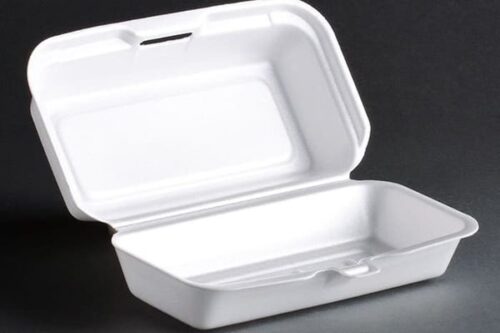


Polystyrene (PS) is the styrofoam we all commonly used for food containers, egg cartons, disposable cups and bowls, packaging, and also bike helmet.
When exposed to hot and oily food, PS could leach styrene is considered as brain and nervous system toxicant. It could also affect genes, the lungs, the liver, and the immune system. On top of all of those risks, PS has a low recycling rate.
7. Other Plastic Materials
Number seven is for all plastics other than those identified by numbers 1-6 and also plastics that may be layered or mixed with fifferent types of plastics, such as bioplastics.
Polycarbonate (PC) is the most common plastic in this category, isn’t used as much in recent years due to it being associated with bisphenol A (BPA). PC is also known by various name: Lexan, Makrolon, and Makroclear.
Ironically, PC is typically used for baby bottles, sippy cups, water bottles, water gallons, metal food can liners, ketchup containers, and dental sealants. Due to its toxicity, several countries have banned the use of PC for baby bottles and infant formula packaging.
The BPA contained inside PC has been linked to numerous health problems including chromosome damage in female ovaries, decreased sperm production in males, early onset of puberty, and various behavioral changes.
It has also been linked to altered immune function, sex reversal in frogs, impaired brain and neurological functions, cardiovascular system damage, adult-onset (Type II) diabetes, obesity, resistance to chemotherapy, increased risk of breast cancer, prostate cancer, infertility, and metabolic disorders.
Added with its very low recycle rate quality, PC is to be avoided at all costs.
The 3 Important (Key Points)
Memorizing all of those 7 different materials (types) of plastic could be overwhelming, so here are several key points you need to remember:
- Though it varies between types, every single category of plastic could leach hazardous materials if put in an extreme situation such as extreme heat.
- 3 types of plastic that are considered as safer options among the others are Polyethylene Terephthalate (PET), High-Density Polyethylene (2-HDPE), and Polypropylene (5-PP).
- Although the experts are currently working on inventing the best method and strategy to recycle all of those types of plastic, the 2 types of plastic that are mostly picked up by the recycling programs are Polyethylene Terephthalate (1-PET) and High-Density Polyethylene (2-HDPE).
Reasons Why Not All Plastics Can Be Recycled
Although both are called plastic, not all types of plastic can be recycled. Many reasons could influence this. However, one of the fundamental reasons is the need for more facilities, technology, and funds to finance the recycling of certain types of plastic.
In addition, the market is less interested, and less profitable material values also affect. Therefore, some recycling plants will only take the type of plastic they need and ignore the rest.
The early history of plastic usage
The early history of plastic usage dates back to the 19th century when Alexander Parkes created a material known as “Parkesine” in 1862. Parkesine, which later became the first prototype of plastic, was made from cellulose treated with nitric acid and camphor.
Despite its innovation, the use of plastic was still limited to laboratory experiments. In 1907, Leo Hendrik Baekeland invented Bakelite, the first mass-produced synthetic plastic. Bakelite transformed the industrial landscape, finding versatile applications from household appliances to the automotive industry.
With advancing technology and growing industrial needs, plastic became a predominant material in mass production during the 20th century. However, in contemporary times, we are increasingly aware of the environmental impact of excessive plastic use.
The history of plastic usage reflects technological progress and industrialization, but it also imparts valuable lessons on the importance of sustainable thinking in material consumption.
Tackling the Problem of Plastic Waste in Indonesia
The massive use of plastic has been carried out since the 1950s. It has been applied to many things. One of the most common is to make containers or packages.
Quoted from the Ministry of Industry of the Republic of Indonesia, there were around 892 companies in the plastic packaging industry operating in 2018.
Demand for plastic products also increased by an average of 5-6% in those years. Unfortunately, an increase in production not accompanied by an increase in waste management capacity can lead to an even bigger problem of plastic waste generation.
Several other efforts need to be considered to help support waste management which has yet to overcome the existing waste problem.
1. Reducing the Production of Packaging Waste
Manufacturers, business owners, and companies can work to reduce the amount of waste produced from the packaging used in their products.
Some ways include using less plastic packaging materials or using more environmentally friendly packaging materials that can decompose naturally.
2. Packaging Waste Recycling
Both companies and consumers must contribute to as much packaging recycling as possible, such as preventing packaging from being disposed of and mixed with other waste and sending the waste to recycling facilities.
Companies can cooperate with specific recycling programs, such as Waste4Change, which provides In-Store Recycling services that can help you increase the recycling of materials from branded waste in all your business lines. Get complete information at w4c.id/ISR.
3. Packaging Innovation
The industry also needs to continue to innovate to develop more sustainable packaging. This solution includes using biodegradable packaging materials or packaging materials that can be recycled more efficiently.
4. Consumer Education
Initiatives such as clear packaging marking and environmental awareness campaigns can help raise consumer awareness about how to dispose of the packaging.
Types of Plastic Category in an Infographic
Now you can choose the proper plastic type for food and drinks. Also you can avoid non foodgrade plastic due to its low recycle rate quality.
Don’t forget to separate your wastes responsibly. Don’t mix the organics with non-organics; do segregate the glass from the paper and plastic. It’ll help with the recycling process! Explore Waste4Change site to learn more about waste management.



